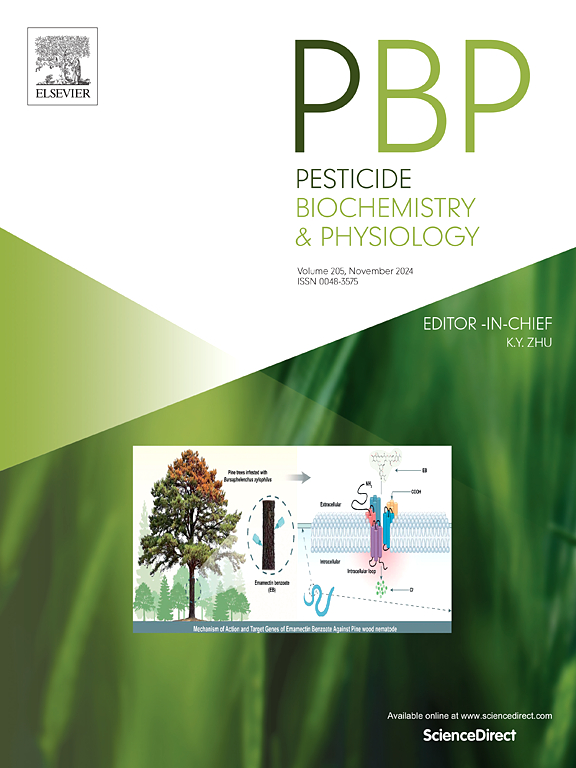Honey bees prefer moderate sublethal concentrations of acetamiprid and experience increased mortality
IF 4.2
1区 农林科学
Q2 BIOCHEMISTRY & MOLECULAR BIOLOGY
引用次数: 0
Abstract
Acetamiprid, a prevalent neonicotinoid residue in honey, poses long-term risks to honey bee health even at sublethal concentrations. Despite this, the chronic lethal effects across a bee's full adult life stage and the influence of acetamiprid at environmentally relevant concentrations on food preferences in honey bees remain uncertain. By conducting a long-term survival monitoring, we found that bees chronically exposed to 0.75 mg/L acetamiprid exhibited a greater mortality compared to those exposed to the highest concentration (3 mg/L) when given a choice between acetamiprid-treated syrup and nontreated pollen. Bees exposed to 0.75 mg/L acetamiprid consumed less pollen and higher amounts of treated syrups compared to the control and 3 mg/L treatment, indicating a preference for moderate sublethal concentrations. To refine our understanding, we tested a range of additionally extended acetamiprid concentrations (0, 0.1, 0.5, 1, and 5 mg/L) using various food-choice assays. The findings indicated no consumption bias and revealed a significant dose-response relationship concerning reduced survival at concentrations exceeding 0.5 mg/L of acetamiprid in the no-choice assay, while manifesting a highest preference for 0.5 mg/L concentration in the two-choice and five-choice assays. This study underscores the hidden risk of acetamiprid threatening bees through foraging preferences on specific range of concentrations.

求助全文
约1分钟内获得全文
求助全文
来源期刊
CiteScore
7.00
自引率
8.50%
发文量
238
审稿时长
4.2 months
期刊介绍:
Pesticide Biochemistry and Physiology publishes original scientific articles pertaining to the mode of action of plant protection agents such as insecticides, fungicides, herbicides, and similar compounds, including nonlethal pest control agents, biosynthesis of pheromones, hormones, and plant resistance agents. Manuscripts may include a biochemical, physiological, or molecular study for an understanding of comparative toxicology or selective toxicity of both target and nontarget organisms. Particular interest will be given to studies on the molecular biology of pest control, toxicology, and pesticide resistance.
Research Areas Emphasized Include the Biochemistry and Physiology of:
• Comparative toxicity
• Mode of action
• Pathophysiology
• Plant growth regulators
• Resistance
• Other effects of pesticides on both parasites and hosts.

 求助内容:
求助内容: 应助结果提醒方式:
应助结果提醒方式:


